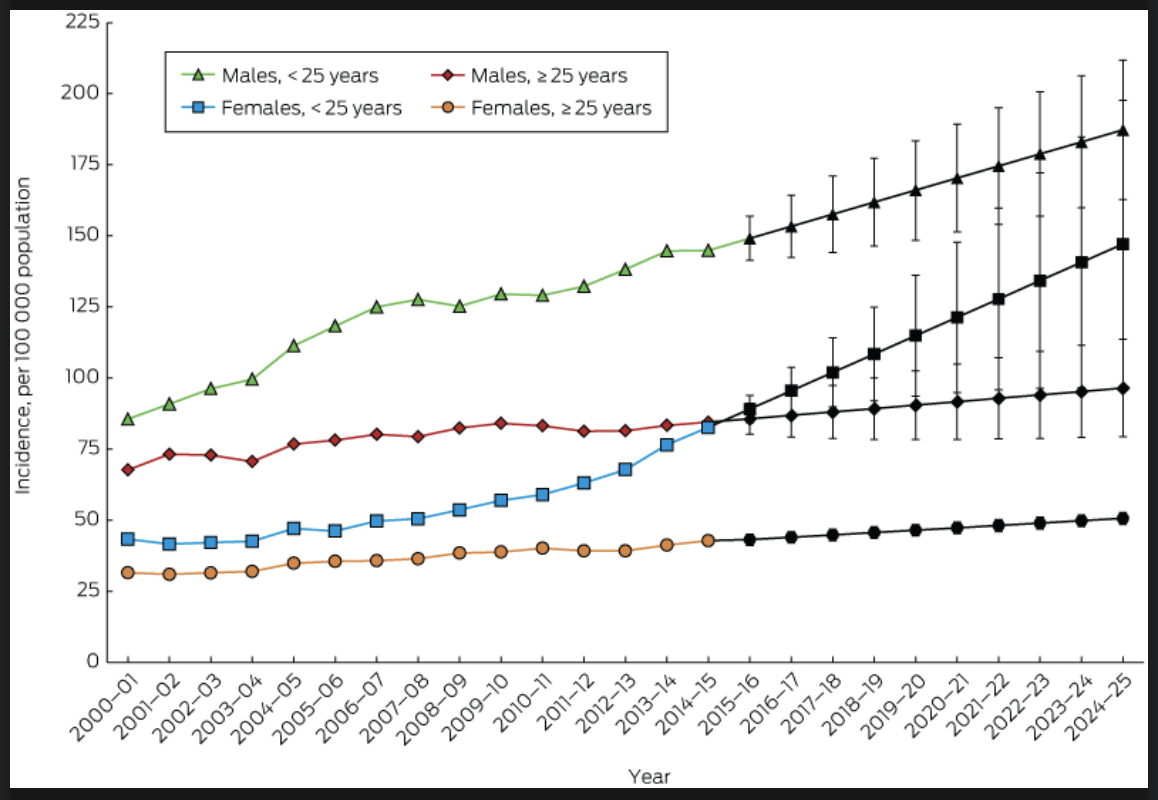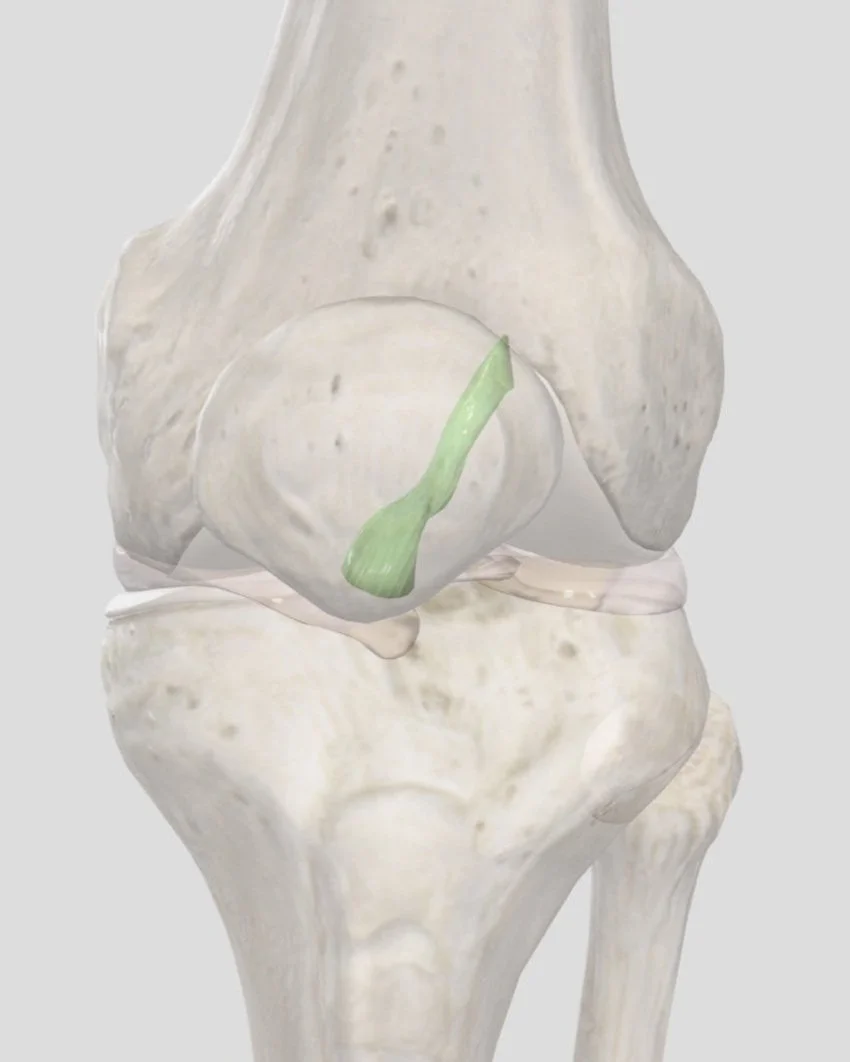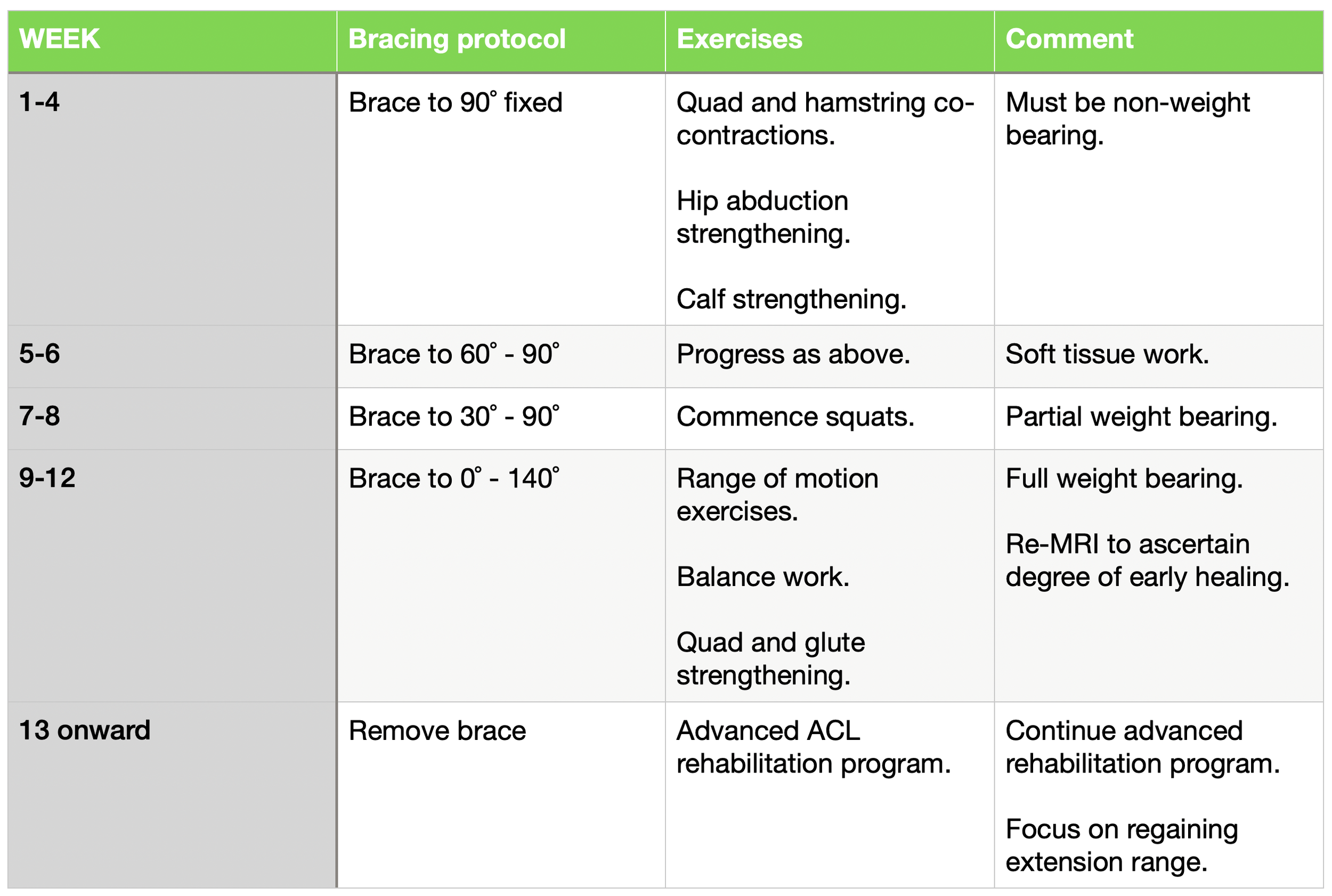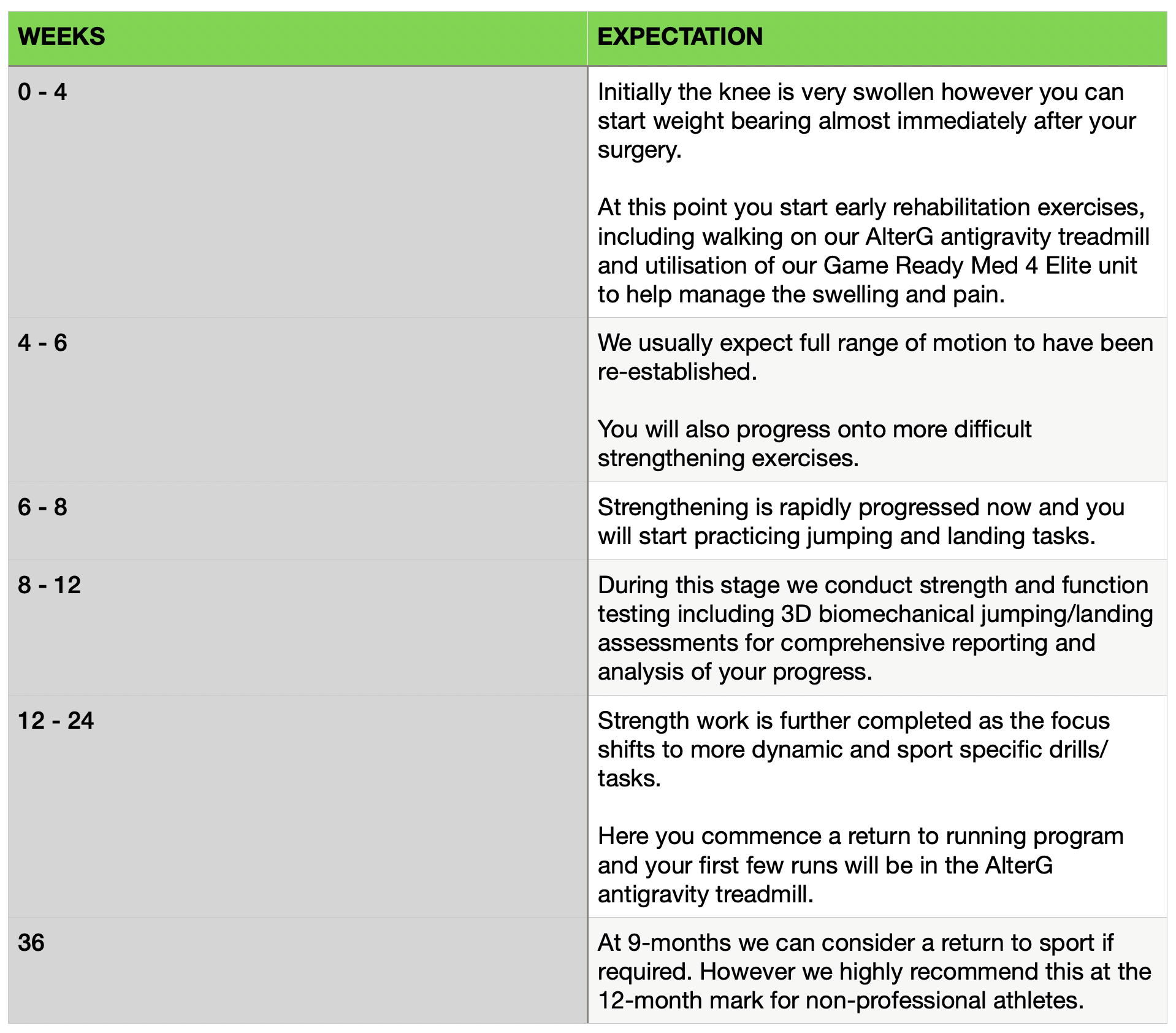A Physiotherapists comprehensive guide to ACL rehabilitation in Sydney
In this article, we want to take an in-depth look at the options you have after an acute ACL injury, including some of the latest research regarding the Cross Bracing Protocol for a considered non-surgical option. As well as time frames and what to expect.
The incidence of both ACL injuries and ACL surgeries completed have substantially increased and although the below image (Image 0) shows national figures it would be very similar here in the Sutherland Shire
Image 0 - The incidence of both ACL injuries and ACL surgeries completed
What is the ACL in the knee?
The ACL is an internal ligament within your knee. Ligaments attach bone to bone and provide support to your skeletal system especially when underlay during activity. The ACL predominantly limits anterior translation of your tibia (shin bone) at the knee and also stabilises your knee during pivoting movements, the most notable being changing direction rapidly during sport. Below is a group of images showing the ACL’s position with the knee.
ACL ANTERIOR VIEW
The view of the ACL from the front of the knee.
ACL POSTERIOR VIEW
The path of the ACL as seen by the back/rear of the knee.
Why do I need an ACL?
An ACL is a bit like a Porsche. Do you need it? If you are a competitive Porsche race car driver, yes. If you don’t have a license, no. If you have a terrible personality, maybe.
In short, the answer to this is, you don’t. You can still function well without an ACL and many, even elite athletes do. However, in the absence of a particular tissue that has a role to perform, something else is going to have to pick up the slack… and this can occur through a complex system involving the strength and control of the muscles that either directly or indirectly support the knee. With that said, the initial question that needs to be answered, prior to considering surgery, is what do I need my knee to do?
Do I need it to walk to the office every day or do I need it to be able to change direction while sprinting as rapidly as possible to avoid an opposing player as a professional footballer? Both have significantly different demands on the knee. Whilst you can still get a lot of function out of an ACL deficient knee as mentioned above, you still can’t fulfill the role of the tissue other ways, better, than the original role that tissue was performing and was designed to specifically perform itself.
So to recap you don’t “need” an ACL, but depending on your unique circumstances this will dictate what pathway you should follow, when considering surgery or non-surgery. We have had doctors who love skiing decide not to have ACL surgery and continue to ski without a care in the world and we have had retired office workers who need their knee to be able to turn the corner from the dining room to the lounge room down the hallway get their ACL repaired. It really comes down to your choice in the end.
With all of this said, the majority of people choose to have their ACL surgically repaired and conduct a comprehensive rehabilitation program before and after, and to be honest, this would be my choice if it were my knee. But to try and correctly answer the question… you don’t have to have an ACL repair done.
This may raise 2 questions, “Won’t I get arthritis or need a knee replacement later in life, if I don’t get my ACL done? and, can the ACL heal without surgery?
This is an area of a lot of discussion. And as often is the case, as more research is done in the area our opinions change over time. It was previously believed that if you didn’t have your ACL surgically repaired, you were at a much higher risk of developing osteoarthritis down the track, this made sense as in theory, there would be more translation of the knee without an ACL, and this would potentially result in more wear and tear. The only issue with this is that long-term studies haven’t confirmed this, particularly when the individual undertakes a comprehensive rehabilitation program under a Physiotherapist.
The second question is will my ACL heal without surgery? In the case of a complete rupture, generally no it won’t, however, this may be an issue related to how the knee is managed in the initial stages of the injury. Spontaneous healing does occur in approximately 20% of acute ACL injuries if managed well with an appropriate Physio program. This has led to more research being completed and is still needed in this area to help guide best practices.
This brings us to the recent discussions around the Cross Bracing Protocol. This was developed by Stephanie Fibay et al who released a study in May this year that has made many Physio’s and surgeons sit up and listen.
The Cross-Bracing Protocol
The Cross Bracing Protocol (CBP) is a set protocol for using a range-of-motion brace as early as possible after the acute injury, with suggested graded increments where the range of motion in the brace is increased. Most importantly initially between week 1 and 4 the knee is locked at 90˚ and non-weight bearing. This is because between 90˚-135˚ of knee flexion (0˚ being your leg out straight), the ACL attachments are the shortest distance apart and this therefore endorses spontaneous healing as much as possible. Below is a diagram of the protocol (Image 2).
Image 2 - Cross-bracing protocol (CBP)
Despite the CBP, which is still very new, ACL surgery is still the most common option and in most circumstances would be our recommendation.
We have discussed the different options with surgery and also our Aevum advanced rehabilitation program HERE.
How quickly can I get back to sport after ACL surgery?
Here are some of the expected time frames after ACL surgery (Image 3 below), an indication of how quickly you can recover after surgery, and an answer as to when can you return to sport after ACL surgery.
Image 3 - Expected time frames after ACL surgery.
If you have injured your ACL the first thing is to book in to see your Physiotherapist. They can test the ACL and if necessary refer you for an MRI to confirm. They will also start you on the path that is best for you, in order to get you back to your best as soon as possible.





